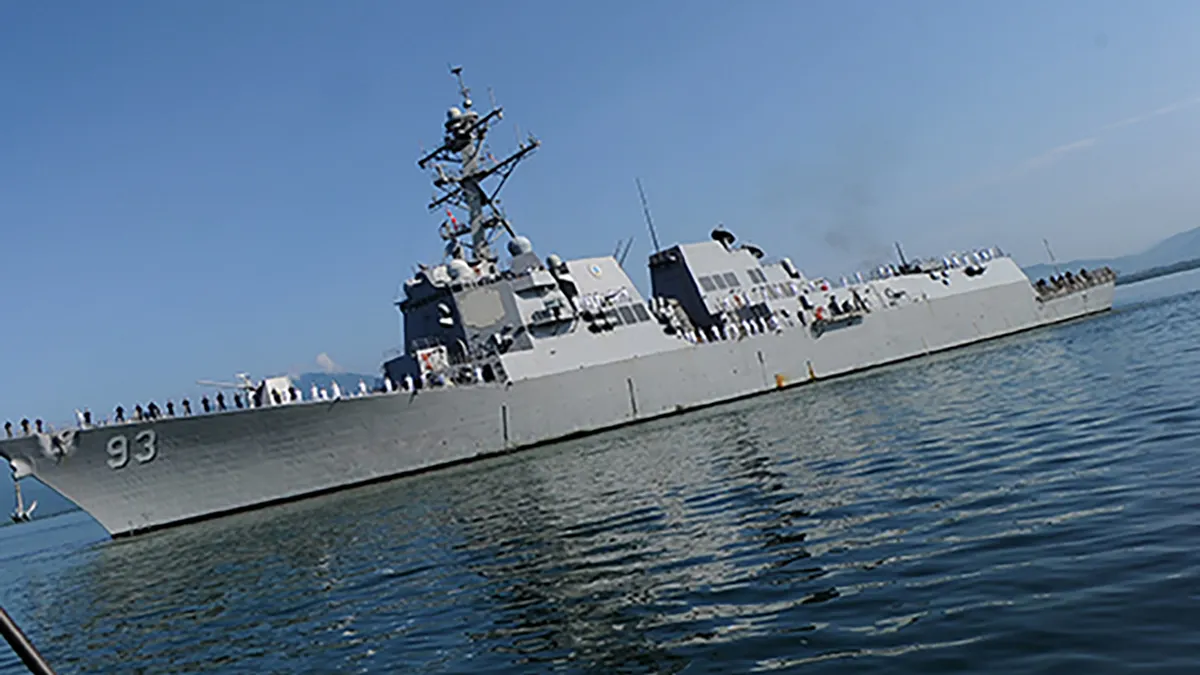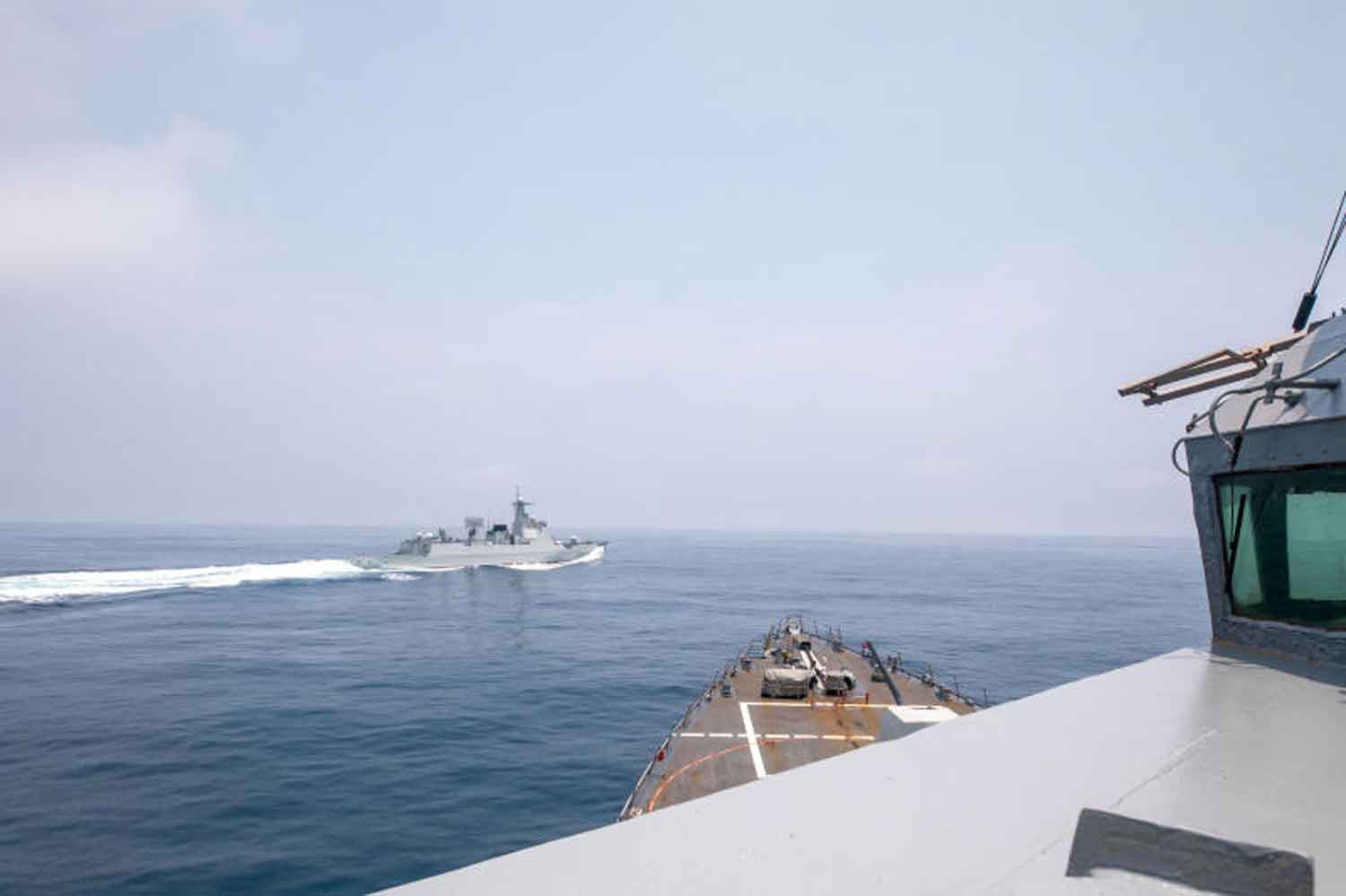On Saturday, a Chinese warship came dangerously close to colliding with the USS Chung-Hoon, coming within 150 yards, and then crossed in front of the U.S. destroyer a second time at approximately 2,000 yards while the Chung-Hoon was engaged in joint exercises with Canada in the Taiwan Strait, according to U.S. Indo-Pacific Command (USINDOPACOM).
This incident occurred amid heightened tensions between the U.S. and China in the South China Sea.
USINDOPACOM reported that the Chinese vessel performed “unsafe maneuvers,” overtaking the USS Chung-Hoon on its port side at a distance of 150 yards while the destroyer was operating “through waters where high seas freedoms of navigation and overflight apply” with Canada’s HMCS Montreal.
The Chinese ship then crossed the Chung-Hoon’s bow a second time, moving from starboard to port at a distance of 2,000 yards and continued to remain off the Chung-Hoon’s port bow.
USINDOPACOM stated that these actions “violated the maritime ‘Rules of the Road’ for safe passage in international waters.”
According to Canada’s Global News, the U.S. instructed the Chinese ship to maintain a safe distance from the destroyer. The Chinese vessel changed course at the last moment, while the Chung-Hoon reduced speed to 10 knots but kept its course.
HMCS Montreal Commander Paul Mountford criticized the incident as “not professional,” asserting that it was “clearly instigated by the Chinese”.
Mountford noted that the Chinese vessel’s announcement over the radio before the maneuver indicated intentionality..

He expressed hope that this would be an isolated incident, emphasizing the adherence to international law in international waters.
Mountford also mentioned that the Chinese had claimed the U.S. and Canadian ships were in Chinese territorial waters, even though the strait is recognized as international waters.
Chinese vessels had been monitoring the joint U.S.-Canadian exercises for the week prior to their entry into the Taiwan Strait, according to the report.
Canadian Defense Minister Anita Anand affirmed Canada’s commitment to operating where international law permits, including in the Strait and the South China Sea.
She stated, “Our goal is to increase the peace and stability of this region,” and indicated that Canada’s presence in the region will align with its Indo-Pacific strategy.
Anand highlighted that Canada has addressed unsafe intercepts with China concerning Royal Canadian Air Force pilots and stressed the importance of responsible engagement by all regional actors.
Anand had recently attended a security summit in Singapore with U.S. Secretary of Defense Lloyd Austin and China’s Defense Minister Li Shangfu.
Late last month, the Chinese government warned of “serious consequences” against the U.S. for its navigation through the contested Paracel Islands, which China claims sovereignty over.
Additionally, China disregarded Vietnam’s exclusive economic zone (EEZ) by deploying a research ship and five escort vessels to an area where a Russian state company and Hanoi jointly operate a gas block in the resource-rich South China Sea.







Leave a Reply